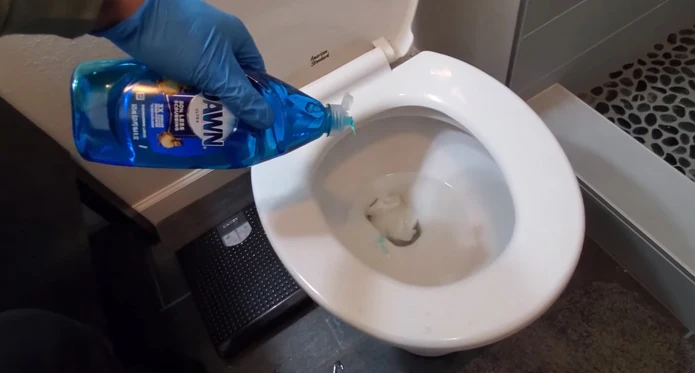Last Updated on October 18, 2023
We all want our toilets to be clean. But sometimes, the cleaning products we use to achieve this can do more harm than good. Many toilet bowl cleaners contain harsh chemicals that can cause skin irritation and respiratory problems. In some cases, these chemicals can also pollute groundwater and damage septic systems.
Making your own toilet bowl cleaner is a great way to save money and avoid exposure to harsh chemicals. Not only is it easy to make, but it’s also just as effective as chemical-laden counterparts, and they are much safer to use. But how to make non-toxic toilet bowl cleaner?
Below we will discuss everything you need to know about making your own non-toxic toilet bowl cleaner, including what ingredients to use and how to use them.
How To Make Non-Toxic Toilet Bowl Cleaner: DIY 5 Steps
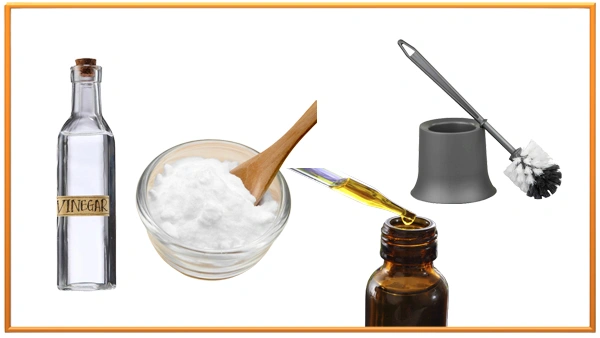
It’s important to be conscious of the chemicals we’re exposing ourselves to daily. One way to reduce exposure is to ditch store-bought toilet bowl cleaners in favor of a homemade, non-toxic alternative. To make your own cleaner, you will need the following item:
- White vinegar
- Baking soda
- Water
- Essential oils (optional)
- Toilet brush
Now that you have all the necessary ingredients let’s start preparing homemade toilet cleaner that is non-toxic.
- Pour one or two cups of white vinegar into a bowl or jar and stir to combine.
- Adding 1/2 cup of baking soda and stirring together will result in a smooth mixture.
- If you want your cleaner to have a pleasant scent, add 10-15 drops of the essential oil of your choice. Some good essential oils include lavender, lemon, or tea tree oil.
- Once everything is combined, pour the cleaner into your toilet bowl and brush away. By using vinegar, you can remove stains, while the baking soda will scrub away any build-up.
- Leave the cleaner to sit for 15-20 minutes before flushing away.
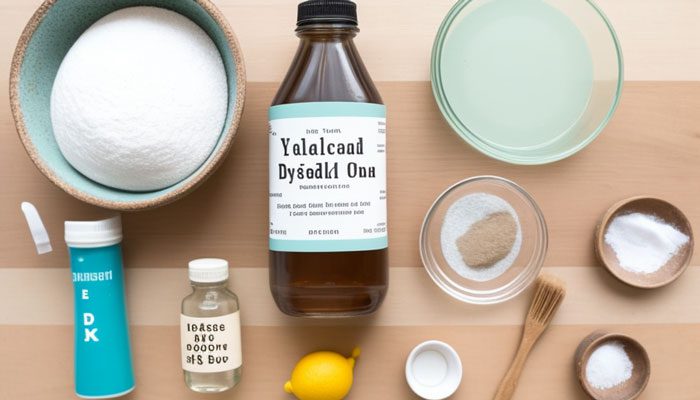
Although the homemade toilet bowl cleaner you just made is non-toxic and safe to use, there are some safety measures you should take when using it.
Precautions:
- Wear gloves when handling the toilet cleaner to avoid skin irritation.
- Make sure the room is well-ventilated when using the cleaner.
- Avoid contact with your eyes, nose, and mouth.
- Rinse the toilet bowl thoroughly after cleaning.
If you follow these simple tips, you can use your non-toxic toilet bowl cleaner with peace of mind, knowing that you’re not exposing yourself or your family to harmful chemicals.
When Should You Use Non-Toxic Toilet Bowl Cleaner?
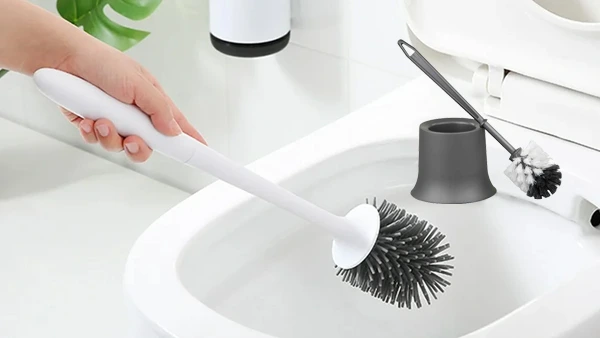
Non-toxic toilet bowl cleaners are made with natural ingredients that are safe for you and the environment. They are ideal for cleaning your toilet regularly and can be used on most surfaces in your bathroom. There are a few instances where chemical-free toilet bowl cleaners are recommended.
Non-toxic toilet bowl cleaners should be used in the following situations:
- When you have small children or pets in the home
- In case you are pregnant or nursing
- When your skin is sensitive
- If you care about the environment
- To avoid toxic chemicals
No matter what your reason is for wanting to use a chemical-free toilet bowl cleaner, there are plenty of great options available. You can find cleaners made with natural ingredients like vinegar, baking soda, and lemon essential oil. These cleaners are safe to use and will leave your toilet sparkling clean.
What Is the Usual Period Of Using a Non-Toxic Toilet Bowl Cleaner?
A toilet bowl is one of the most important places in a home to keep clean. Not only does it see a lot of use, but it also provides a breeding ground for bacteria. The frequency you clean your toilet non-toxically depends on a few factors, but you should clean your toilet once a week in general.
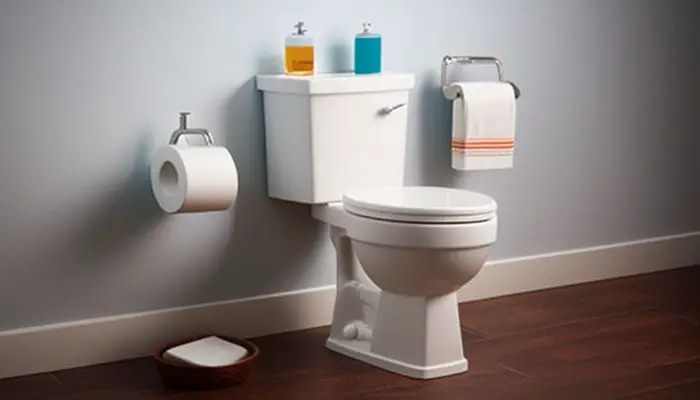
Consider the following factors when using a toilet bowl cleaner:
- The number of people in your household
- How often is the toilet used
- If anyone in your home has a chronic illness
- The type of cleaner you are using
- In case you have pets
If you have a large household or if the toilet is used frequently, you may need to apply a natural toilet bowl cleaner that is non-toxic more than once a week. If possible, you should clean your toilet every day. This will help to prevent the build-up of germs and make your toilet bowl clean and fresh.
Can a Toilet Bowl be Disinfected With a Non-Toxic Cleaner?

You may be surprised to learn that you can disinfect your toilet bowl using a non-toxic product. An excellent multipurpose cleaner is a vinegar spray, baking soda, and water. vinegar is an acetic acid that can kill viruses and bacteria. Stains can be removed with baking soda because it is a mild abrasive.
When used non-toxic ingredients to clean your toilet bowl, these ingredients can effectively clean and disinfect a toilet bowl. Also, you can use this homemade cleaner rapidly and frequently whenever necessary without any negative consequences. Remember to clean under the rim of the toilet bowl, as this is where most germs and bacteria like to hide.
Can You Put Hydrogen Peroxide In the Toilet Bowl Cleaner?
Yes, you can add hydrogen peroxide to a toilet bowl cleaner. Hydrogen peroxide is a natural disinfectant and stain-remover, making it an ideal choice for cleaning your toilet bowl. When used properly, hydrogen peroxide is safe and effective at cleaning your toilet and preventing the growth of bacteria and germs.
To use hydrogen peroxide as a toilet bowl cleaner, pour a cup of water and 1/2 cup of hydrogen peroxide into a bowl. Then add a cup of baking soda and mix it together. Now put the mixture into a clean toilet bowl and let it sit for a few minutes. After a few minutes have elapsed, use the toilet brush the bowl, and flush away.

You can also use hydrogen peroxide directly in your toilet bowl by adding a few drops to the water. This will help disinfect your toilet and remove any bad odors. But the process discussed earlier is the ideal way to clean your toilet bowl with hydrogen peroxide.
How Do Baking Soda and White Vinegar Work Together?
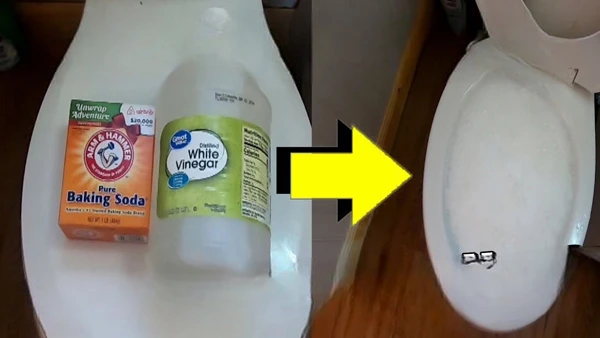
Baking soda is a popular household product with a multitude of uses. It can be used for baking, cleaning, and even de-clogging drains. When mixed with white vinegar, the two substances create a powerful cleaning solution.
Baking soda reacts with vinegar to produce carbon dioxide gas. This gas helps to loosen dirt and grime, making it easy to wipe away. The baking soda also helps to absorb odors, making this an ideal solution for cleaning kitchens and bathrooms.
Along with being an excellent cleaning solution, the baking soda and vinegar mixture can also be used for degreasing surfaces and polishing metals. If you use it on hard surfaces, the mixture can help to remove stubborn stains. And when used on metals, the mixture leaves behind a brilliant shine.
So, what exactly happens when baking soda and vinegar are mixed together? The answer lies in the science of chemical reactions. When two substances are combined, they undergo a chemical reaction that creates new substances.
Do Bleach And White Vinegar Mix Well to Clean Toilet Bowls?
It’s never a good idea to mix vinegar and bleach. Chlorine gas is created by mixing bleach and vinegar. It is deadly even in small quantities to mix because chlorine gas is released. Chlorine is used in many industrial processes, but it is also one of the most dangerous chemicals we use in our homes.
Vinegar is acetic acid, and bleach is sodium hypochlorite. By mixing these two compounds, they create chlorine gas which can be deadly if inhaled. This gas can be deadly if you breathe it in, even in small quantities. There are also other symptoms associated with chlorine poisoning, including coughing, breathing difficulties, watery eyes, and throat and nose burning.
Leave the area immediately if you smell a pungent odor after mixing vinegar and bleach. To keep bleach cleaners and vinegar cleaners separate, make sure to keep them in separate containers and don’t mix them together. And if you do accidentally create a chlorine gas cloud, get out of the area immediately and call for help.
Can Vinegar be Poured Directly Into Toilet Bowls?

While vinegar is a great cleaning agent, you may wonder if it’s safe to pour directly into your toilet bowl. After all, vinegar is an acid, and toilets are made of porcelain. The good news is that vinegar is quite perfectly safe for cleaning toilets. This is actually one of its most common uses.
The acidic nature of vinegar makes it ideal for removing stains, such as those caused by lime and calcium deposits. And because vinegar is also naturally antibacterial, it can help to keep your toilet clean and free of harmful germs. You should notice a difference after cleaning your toilet with vinegar.

